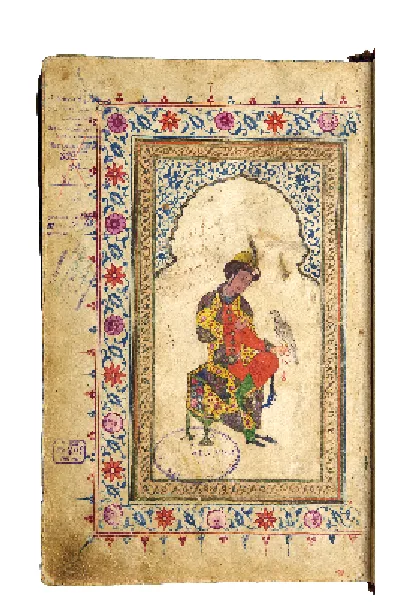
In the 16th century, the idealized and poetic image of a noble youth, perhaps sometimes corresponding to some real person, became widespread.
The miniature at the beginning of the manuscript Inventory No. 2112/1 “Gul wa Nauruz” Khojuyi Kermani, which in its style dates back to the second half of the 16th century, shows a famous client sitting under a richly ornamented and festooned arch.
This is an idealized handsome man, a hero of oriental verses with a curl on his temple and a soft feminine face, in colorful embroidered clothes, who abandons himself to matters and enjoyments of the feudal elite. In this case he is portrayed with a hunting bird, falconry being a favorite occupation of the medieval elite. The image of a youth with a falcon was rather popular in that period – see, for example, the miniature by the artist Kamal Tabrizi in the Bodleian Library.
Portrayals of noble young men sitting or standing under ornamented and festooned arches are in a number of separate miniatures of the Bukhara school. On the reverse of one of them there is scene painted by the famous Herat calligrapher Mir Ali working at the court of the Shaybanids in Bukhara.
You can learn more about this topic in the book-album “The Collection of the Al-Biruni Institute of Oriental studies, the Academy of Sciences of the Republic of Uzbekistan” (part five, “Miniature and Calligraphy”) (Volume XXV) from the series "The Cultural Legacy of Uzbekistan".
The main sponsor of the project is the oilfield services company Eriell-Group.
